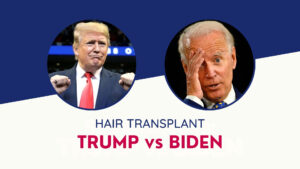Taking proper care and ensuring comfort after a hair transplant is crucial. One important aspect of post-hair transplant care is the use of hats and beanies. In this article, we will explore how to correctly use these headwear items after a hair restoration procedure to enhance your recovery process.
- Why Is Hat and Beanie Usage Important After a Hair Transplant?
- After a hair transplant, your hair follicles go through a sensitive phase. Therefore, providing the right protection is critical. Using hats and beanies helps shield your hair follicles from external factors while protecting your head from the harmful effects of the sun and cold weather. This can expedite the recovery process after a hair transplant.
- How to Choose the Right Hat and Beanie?
- Selecting the appropriate hat and beanie for post-hair transplant comfort is essential. Here are some factors to consider:
- Cotton Material: Cotton hats and beanies are gentle on your skin and absorb sweat, keeping your head dry.
- Loose and Comfortable Fit: Tight headwear can potentially harm your hair follicles. Therefore, opt for loose and comfortable-fitting items.
- Sun Protection: When choosing your hat or beanie, opt for models that offer protection from the sun’s harmful UV rays, which can affect your hair follicles.
- Selecting the appropriate hat and beanie for post-hair transplant comfort is essential. Here are some factors to consider:
- How to Wear Hats and Beanies?
- Gently put on and take off your hat or beanie after a hair transplant to avoid damaging the hair follicles. Take your time and avoid rushing.
- Keep your hat or beanie clean by washing it regularly to prevent the buildup of sweat or dirt.
- In extremely hot weather, avoid wearing your hat or beanie for extended periods to allow your head to breathe.
- Limit the use of hats and beanies during the recommended post-transplant period, typically during the first few weeks.
- Using Hats During the Winter Months for Hair Transplant Patients
- Wearing hats during the winter months is particularly important for patients who have undergone hair transplants to protect their hair follicles from the following advantages:
- Heat Retention: Wearing a hat in cold weather helps keep your head warm, making your recovery process more comfortable.
- Protection from Cold Winds: Cold winter winds can negatively impact your hair follicles. Wearing a hat shields them from these harsh conditions.
- Preserving Moisture: Cold air is often associated with dry skin and scalp. A hat helps maintain moisture in your skin.
- Sun Protection: Even in winter, the sun’s harmful effects persist. A hat provides protection against UV rays.
- Wearing hats during the winter months is particularly important for patients who have undergone hair transplants to protect their hair follicles from the following advantages:
- Using Hats During the Summer Months for Hair Transplant Patients
- Hat usage is essential for patients who have undergone hair transplants during the summer months, but certain considerations apply:
- Sun Protection: The sun’s impact is stronger during summer, and post-hair transplant skin can be sensitive. Using a hat shields your skin from UV rays and protects your hair follicles.
- Sweat Management: In summer, temperatures rise, leading to increased sweating. Sweat can irritate the transplanted area. Choose hats or beanies with materials that absorb sweat and keep you dry.
- Light and Breathable Material: Opt for hats or beanies made from lightweight and breathable materials during summer. This helps keep your head cool and comfortable.
- Take Regular Breaks: In extremely hot weather, take frequent breaks by removing your hat or beanie to allow your scalp and skin to breathe.
- Hat usage is essential for patients who have undergone hair transplants during the summer months, but certain considerations apply:
Using hats and beanies in the appropriate situations can significantly enhance your post-hair transplant recovery process. However, it’s essential to use these headwear items with care to avoid any damage to your hair follicles. Ensure that your hat or beanie is not too tight and does not exert pressure on your hair follicles. Additionally, follow your doctor’s recommendations throughout the recovery period, as each patient is unique and may have specific care requirements.
By following this guide, you can effectively manage the use of hats and beanies after a hair transplant, promoting healthy hair growth and a comfortable recovery journey. Proper post-hair transplant care is essential for achieving the desired results.





